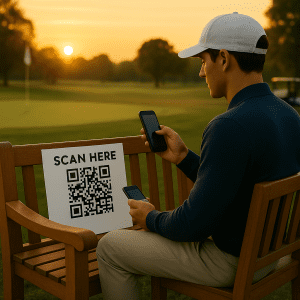In an advertising world overloaded with digital noise, guerrilla marketing stands out for one powerful reason—it’s unforgettable. From sidewalk stencils to surprise performances in public spaces, these unconventional campaigns have a way of sticking in our brains long after the moment passes. But why exactly does guerrilla marketing work so well? The answer lies in neuroscience.
In this blog, we’ll explore the neural mechanisms that make guerrilla marketing ads so engaging. We’ll also dive into practical insights for marketers who want to apply brain science to their next campaign. Whether you’re a brand strategist, creative director, or media buyer, understanding the psychological impact of guerrilla marketing is key to maximizing results.
Guerrilla Marketing Articles and the Brain: A Natural Fit
It’s no surprise that guerrilla marketing articles often highlight the “surprise factor” of campaigns—but few go further into the cognitive science behind it. Human brains are hardwired to notice what’s different. In neuroscience, this is known as the orienting response—the brain’s way of alerting us to unexpected stimuli.
Guerrilla marketing leverages this mechanism by:
Breaking context (e.g., ads in restrooms or on sidewalks)
Involving physical environments in unexpected ways
Delivering emotion-first messages rather than product specs
Real-World Example:
A campaign by UNICEF placed guerrilla marketing ads shaped like dirty water bottles in vending machines. Consumers were shocked—and compelled to donate. This emotional activation was immediate, intense, and memorable.
How Guerrilla Marketing Ads Activate Emotional Memory
When you browse articles on guerrilla marketing, emotional storytelling often comes up. That’s because emotions enhance memory retention—a well-documented function of the amygdala, a key brain region for processing emotional experiences.
Guerrilla ads succeed when they:
Surprise viewers emotionally (humor, shock, inspiration)
Create a sense of participation or urgency
Link emotional resonance with brand messaging
Pro Tip:
Instead of showcasing a product, craft a narrative. One brand staged a mock crime scene to raise awareness about domestic violence. The message wasn’t just seen—it was felt.
Guerrilla Marketing Articles and the Power of Mirror Neurons
One of the lesser-known drivers behind effective guerrilla marketing ads is the mirror neuron system. These are brain cells that activate when we observe others’ actions and emotions.
When people see others engaging with a guerrilla campaign—laughing at it, taking selfies, or interacting—they’re more likely to:
Feel a similar emotionWant to engage themselvesDevelop a social bond with the brand
Case Study:
A fitness brand ran a guerrilla marketing ad where people had to do a few push-ups to open a park gate. Bystanders not only cheered them on, but many joined in. Engagement turned social—and social turned into brand affinity.
Why Novelty Equals Engagement in Guerrilla Campaigns
All guerrilla marketing articles point to “uniqueness” as a central strength, but from a neuroscience angle, that’s about novelty bias. The human brain filters out routine stimuli and pays more attention to what’s new or weird.
Guerrilla marketing leverages novelty by:
Choosing unorthodox formats (pizza boxes, public restrooms, etc.)
Appearing in unexpected locations (sidewalks, hand dryers, gym mirrors)
Using interactivity or augmented reality for added freshness
Related Tip:
Change the delivery method, not just the message. A standard flyer may get tossed, but a flyer handed by a mascot or printed on a mirror? That gets remembered.
What the Science Says: Key Neuroscience Principles Behind Guerrilla Ads
Let’s break down the core cognitive principles driving guerrilla ad success, as revealed in top articles on guerrilla marketing:
| Neuroscience Principle | Guerrilla Marketing Application |
| Surprise | Unpredictable ad placement triggers orienting response |
| Emotion | Campaigns evoke emotion, which strengthens recall |
| Mirror Neurons | Watching others interact increases desire to join in |
| Novelty Bias | Unique formats break attention fatigue |
| Context Disruption | Interrupts patterns, prompting engagement |






